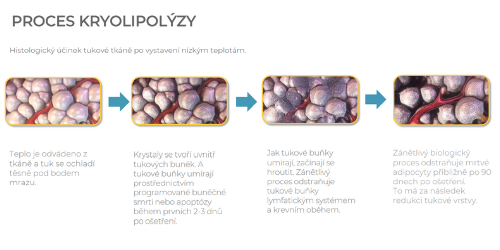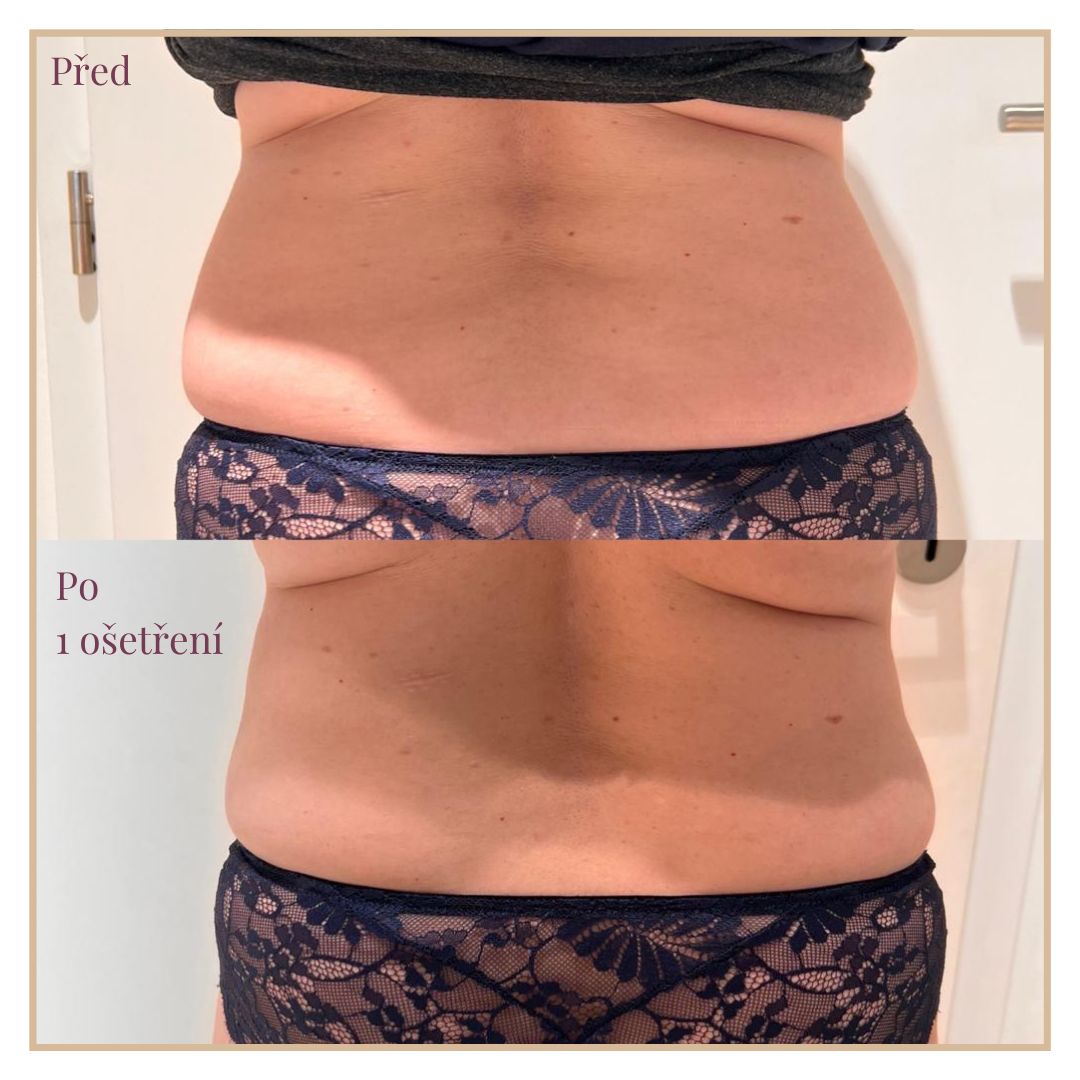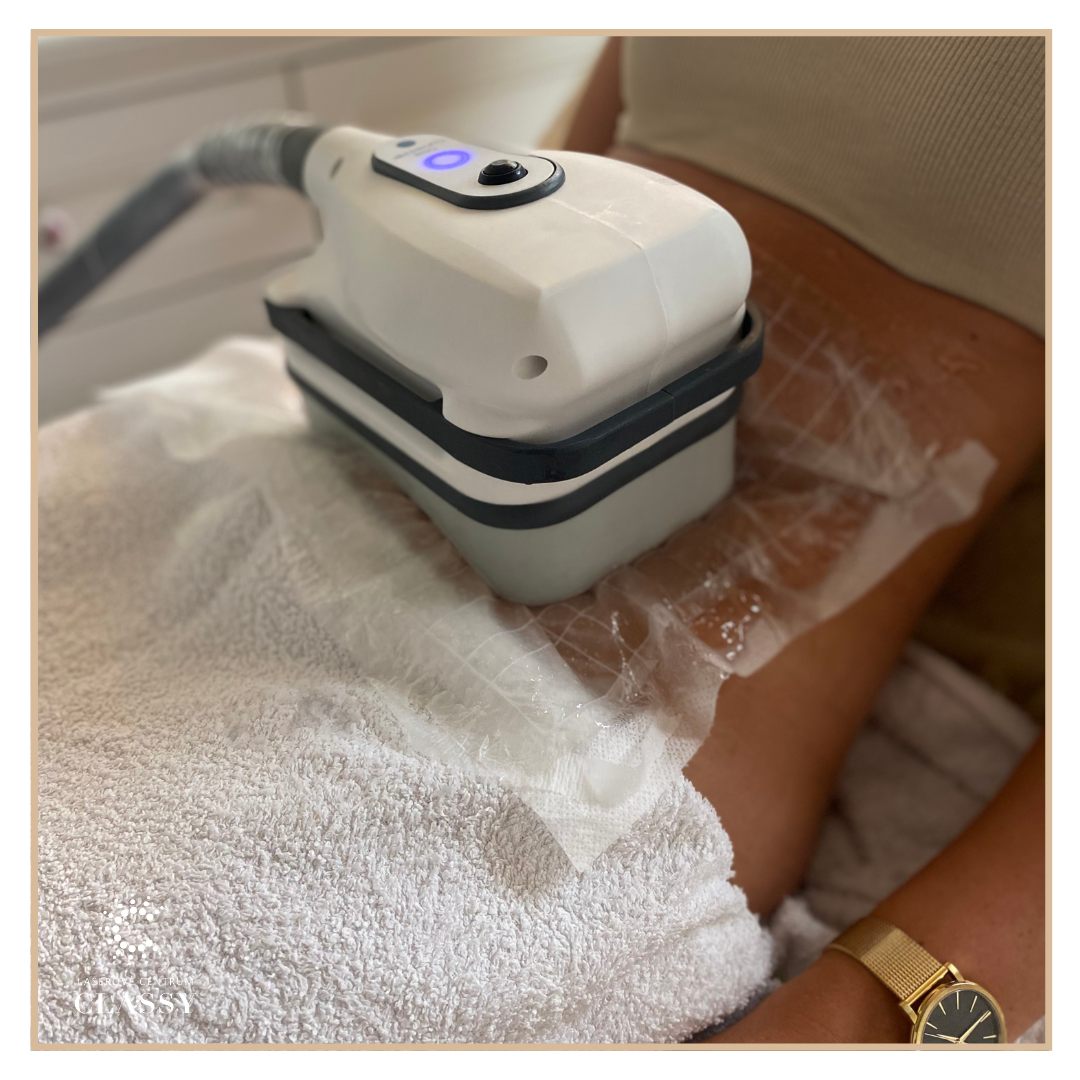What is cryolipolysis?
Have you heard of cryolipolysis, also known as “fat freezing“? Or is this the first time you’re hearing about it? In any case, we hope this article will clarify everything for you and introduce you to the treatment 🙂
So what exactly is cryolipolysis? It is a relatively new non-invasive method for reducing subcutaneous fat, based on the fact that fat cells are more sensitive to cold than other cells. This allows for a reduction in body fat percentage without the need for surgical intervention. It is a gentler alternative to traditional liposuction.
The treatment itself involves locally cooling the treated area using an applicator to -10°C. The effect of this temperature disrupts the fat cells in the targeted area, leading them to undergo a natural cellular process called apoptosis, or cell death. The fat cells are then gradually removed from the body through the lymphatic system.

Contraindications and Possible Risks
Generally, this treatment is not recommended for pregnant or breastfeeding women, individuals with cancer, patients with pacemakers, those with infectious diseases, or those with heart and kidney conditions, among others. Although the treatment is non-invasive, it is still somewhat taxing on the body.
The first risk that likely comes to mind is frostbite, which can occur when low temperatures are applied to the treated area. If such an injury occurs, it is usually a mild form that should not have permanent consequences (permanent damage would occur only after 3 hours of intense freezing). This can be caused by improper handling of the device or by the device itself, as not all machines on the market have the proper certification.
Another potential risk is damage to peripheral nerves. This issue has been studied extensively in the past, primarily using pigs in research. Over time, studies transitioned to human patients. One such study took place in 2008 in the United States, where several men and women over the age of 18, all in very good health and without any underlying conditions, were selected. The chosen treatment area for the study was the “love handles” region.
The area was treated 1-3 times, and during ongoing monitoring of all subjects, it was found that fat cell reduction was 20.4% after two months and 25.5% after six months. Neurological examinations (including biopsy results) showed that cryolipolysis does not have a long-term impact on the quantity and density of peripheral nerves. The study results confirmed that cryolipolysis leads to effective fat cell reduction while not having a long-term effect on the quality or quantity of epidermal nerve endings. However, what can occur is short-term reduced sensitivity to touch, pain, and temperature, or even itching or small bruises. Sensitivity usually returns to normal within a few days after the treatment.


Conclusion
Frostbite and nerve damage are cited as the biggest potential risks associated with the treatment, just as with any other procedure you decide to undergo. You must always be aware that there is a possibility something could go wrong, and carefully weigh the pros and cons before proceeding.
Although studies have confirmed that the treatment is safe, cryolipolysis has only been used for fat reduction for a relatively short time. Long-term effects are difficult to assess. Cryolipolysis does not fight obesity, but rather helps reduce fat in problem areas. A healthy lifestyle and good habits are therefore essential. Only then can the results be lasting and health-beneficial. Always make sure to verify the certification of the device before deciding to undergo the treatment!
Sources:
http://www.doktorweb.cz/kryolipolyza-odborna-kritika-z-medicinskeho-hlediska/
https://www.plasticsurgery.org/cosmetic-procedures/nonsurgical-fat-reduction/cryolipolysis
